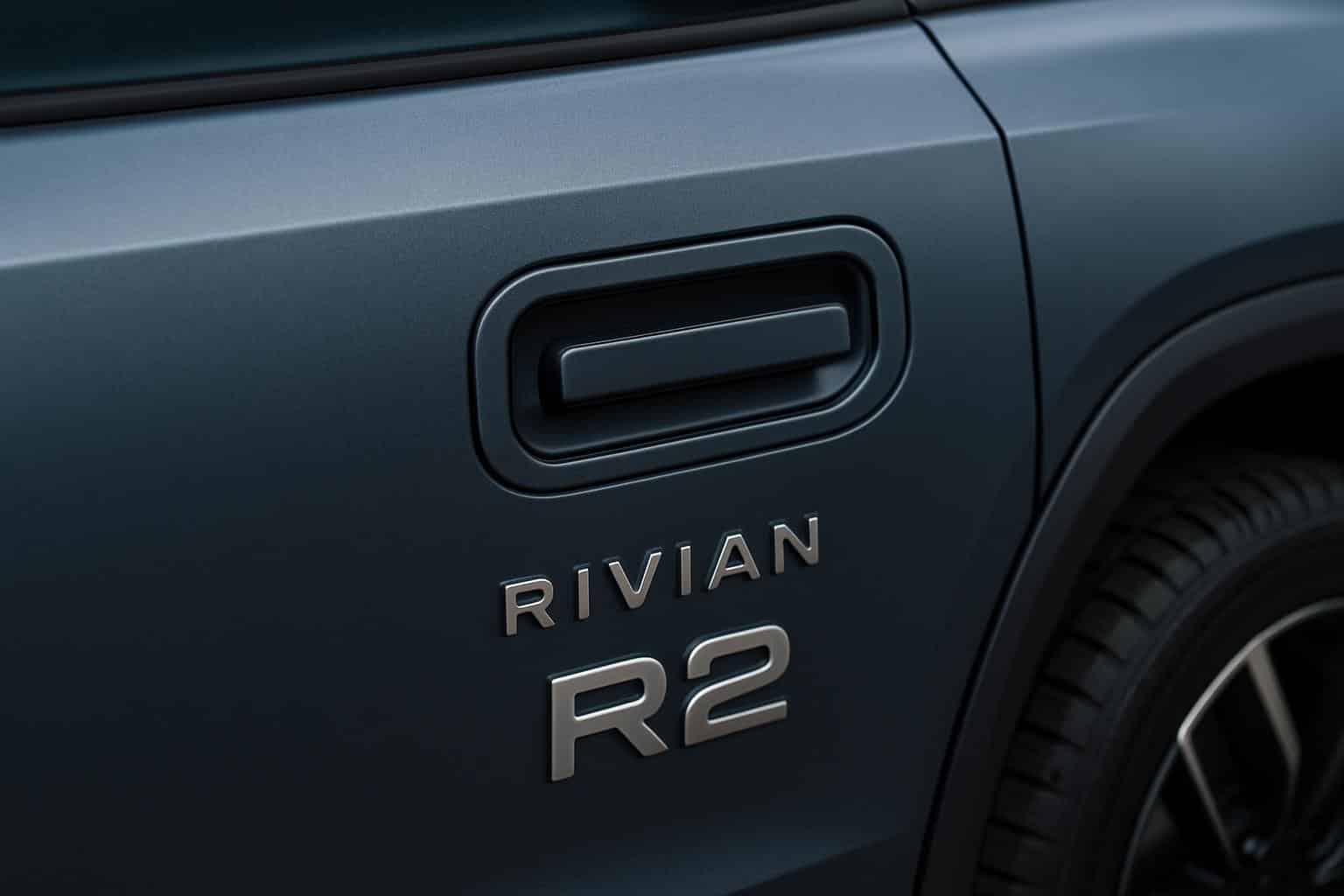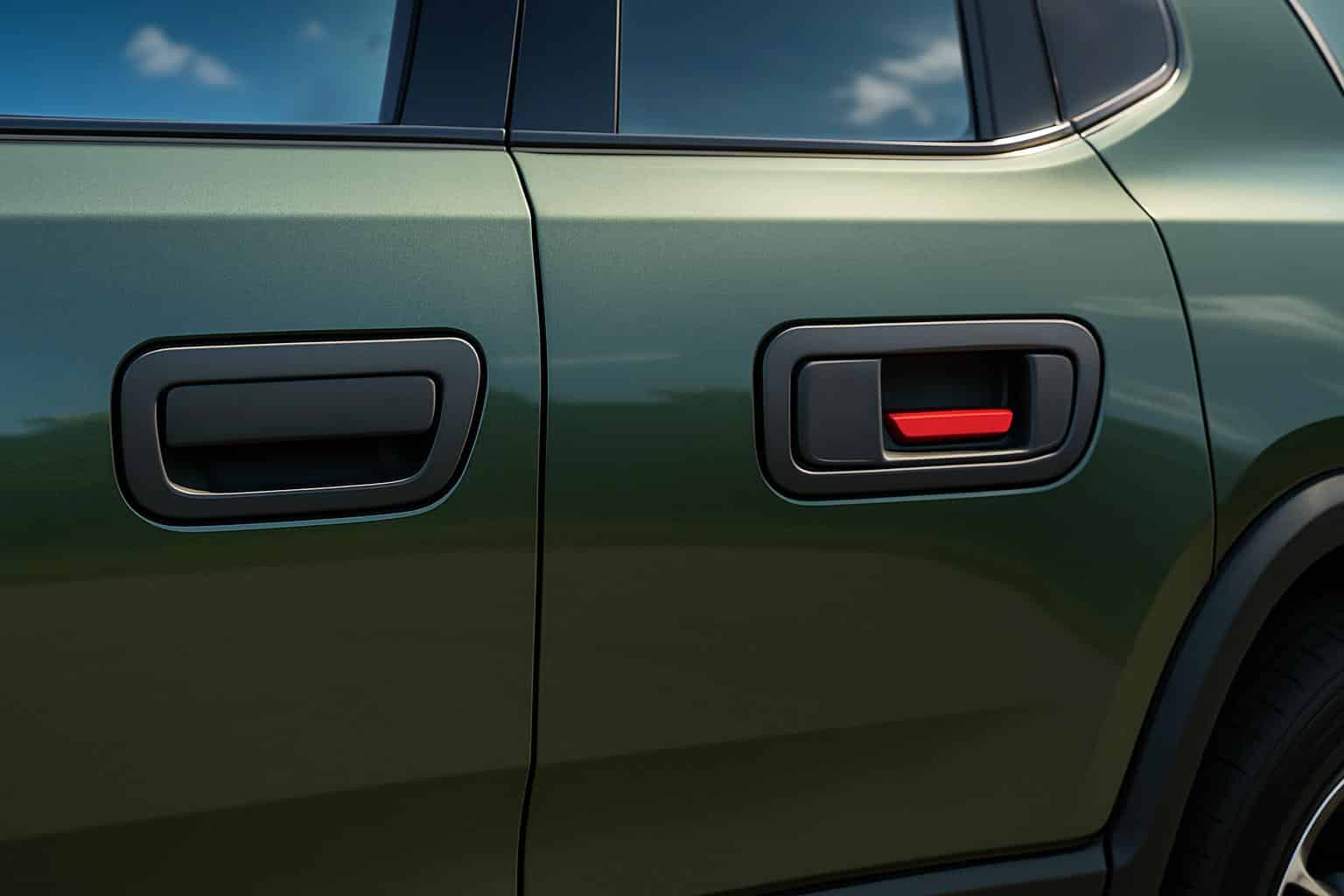Rivian is reconsidering one of the smallest components on its forthcoming R2 SUV — for one of the biggest reasons: occupant safety. After complaints from its own staff and customers made the company aware of issues with the manual emergency release in a recent Bloomberg News story, Rivian is working on a redesign of the system so that those releases are easier to locate during a power loss or crash.
The move demonstrates how automakers are still sussing out the kinks of low-extrusion, electronically latched door handles that are sleek and add to aerodynamics, but can complicate a simple, life-critical thing: getting out of a car when the systems fail.

Rivian Shifts Manual Releases Into Clear View
The report claims that the interior mechanical release of the R2 will be repositioned to a more obvious space with the powered handles. That may sound simple, but it addresses a widespread usability problem: in many modern EVs, the mechanical pull is buried low in the door pocket or underneath trim somewhere, and occupants must hunt for it when every second counts.
Human-factors engineers often caution that disconnecting a first-order control from its fail-safe can be dangerous. Having both of them in the same sightline lowers cognitive burden and just makes the emergency button feel natural. Look for clearer labeling, perhaps some more tactile cues and maybe color contrast to help users find the manual release with only their fingers if they had to in the dark.
Why Electronic Doors Make Safety More Difficult
Flush, electronically operated handles are appealing in that they clean up exterior surfaces and can help eke out a few more tenths of a mile per gallon at highway speeds. But they also introduce a reliance on sensors, actuators and low-voltage power. When something goes wrong with that 12-volt setup — after a crash, battery failure or flooding, for example — doors have to be able to open up the old-fashioned way.
Regulators have taken note. The National Highway Traffic Safety Administration has initiated investigations of how electronic releases perform in emergencies, and safety advocates have called for clearer guidelines regarding e-latch fail-safes. At the same time, high-profile episodes have put design compromises in the spotlight: a Bloomberg investigation chronicled Tesla owners who bristled at their inability to find manual door pulls, and Ford shelved sales of its Mustang Mach-E and issued a recall related to latches that might still stay locked should the low-voltage battery die.
At the core of it is a basic demand that has long been a part of Federal Motor Vehicle Safety Standards: the front doors must enable mechanical egress regardless of power status. Electric actuation is great for ease of daily use, but can’t replace the physical and direct path to unlatch a door when one is under stress.
What the R2 Change Is Signaling for Safety
It’s an indicator that user-focused safety is more important than maintaining clean interior lines. With this more visible, locally operated manual release, Rivian tells us they are making greater technological concessions in their interior design to provide a safer vehicle. It also hints that the company is designing not just for your average use, but for all the edge cases: a side impact that severs low-voltage power; smoke entering a cabin; or a water-to-electronics event where the screens go dark and fine motor skills degrade.

The shift might also have real-world benefits beyond those moments of crisis. When passengers renting or ride-sharing aren’t familiar with a brand’s control locations, they can fumble for hidden releases. Standardized redundancies, when they are obvious and documented, can also help first responders. The more these mechanisms are made standardized and apparent throughout the industry, the less time is wasted guessing.
Context Across the EV Landscape and Safety Trends
Car manufacturers are already heading this way. Tesla has said it is changing its manual release experience, and Ford’s fixes involved correcting latch behavior when 12-volt power failed. Safety organizations such as IIHS (Insurance Institute for Highway Safety) have long stressed that ease of exit is a major component of survivability after an impact and subsequent fire. Although not all such occurrences can be attributed to handle construction, low visibility and difficulty perceiving how an occupant is intended to interact with the handle may increase risk when occupants are disoriented.
That balance remains: small aero benefits from flush hardware might be able to help boost EV range, but never at the expense of intuitive egress. On a production vehicle as high volume as the R2, Rivian’s decision has the potential to establish a positive precedent for how to meld stylish design and fail-safe ergonomics.
What to Watch Before R2 Deliveries Begin
Things to watch for include:
- How prominently manual operation is labeled
- Whether it’s operable with a single natural motion from a seated position
- The system’s behavior during power loss
Eyeball verification — showing in practice that you can exit a vehicle quickly at night and with gloved hands — will be more important than design sketches.
Rivian has earned a reputation for careful hardware, and the R2’s door-handle rethink feels like the company is hearing feedback as it scales. In a time when software-first ideas have inflected car design at all sectors, the most vital safety upgrade on the R2 might be its most analog: a clearly marked, mechanically direct way out.

